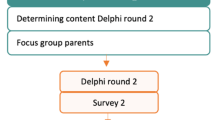Abstract
Objectives
To develop and assess Pediatric Appropriateness Evaluation Protocol for India (PAEP-India) for inter-rater reliability and appropriateness of hospitalization.
Design
Cross-sectional study.
Setting
The available PAEP tools were reviewed and adapted for Indian context by ten experienced pediatricians following semi-Delphi process. Two PAEP-India tools; newborn (≤28 days) and children (>28 days-18 years) were developed. These PAEP-India tools were applied to cases to assess appropriateness of admission and inter-rater reliability between assessors.
Participants
Two sets of case records were used: (i) 274 cases from five medical colleges in Delhi-NCR [≤28 days (n=51); >28 days to 18 years (n=223)]; (ii) 622 infants who were hospitalized in 146 health facilities and were part of a cohort (n= 30688) from two southern Indian states.
Interventions
Each case-record was evaluated by two pediatricians in a blinded manner using the appropriate PAEPIndia tools, and ‘admission criteria’ were categorized as appropriate, inappropriate or indeterminate.
Main outcome measures
The proportion of appropriate hospitalizations and inter-rater reliability between assessors (using kappa statistic) were estimated for the cases.
Results
97.8% hospitalized cases from medical colleges were labelled as appropriate by both reviewers with inter-rater agreement of 98.9% (k=0.66). In the southerm Indian set of infants, both reviewers labelled 80.5% admissions as appropriate with inter-rater agreement of 96.1% (k= 0.89).
Conclusions
PAEP-India (newborn and child) tools are simple, objective and applicable in diverse settings and highly reliable. These tools can potentially be used for deciding admission appropriateness and hospital stay and may be evaluated later for usefulness for cost reimbursements for insurance proposes.
Similar content being viewed by others
References
Ministry of Health and Family Welfare, Government of India. Ayushman Bharat Yojana (2018–2022). Government of India; 2018. Available from: https://www.pradhan mantriyojana.in/ayushman–bharat–yojana/. Accessed March 26, 2018.
Ministry of Health and Family Welfare, Government of India. National Health Policy, 2017. Government of India; 2017. Available from: https://mohfw.gov.in/sites/default/files/9147562941489753121.pdf. Accessed July 19, 2017.
National Health Systems Resource Centre. National Health Accounts Estimates for India (2013–14). Ministry of Health and Family Welfare Government of India; 2016. Available from:https://mohfw.gov.in/sites/default/files/89498311 221471416058.pdf. Accessed July 19, 2017.
Planning Commission (Government of India). Report of the Working Group on Tertiary Care Institutions for 12th Five Year Plan 2012–2017. Government of India; 2011. Available from: http://planningcommission.nic.in/aboutus/committee/wrkgrp12/health/WG_2tertiary.pdf. Accessed July 19, 2017.
Ortiga B, Salazar A, Jovell A, Escarrabill J, Marca G, Corbella X. Standardizing admission and discharge processes to improve patient flow: A cross sectional study. BMC Health Serv Res. 2012;12:180.
Strumwasser I, Paranjpe NV, Ronis DL, Share D, Sell LJ. Reliability and validity of utilization review criteria. Appropriateness evaluation protocol, standardized medreview instrument, and intensity–severity–discharge criteria. Med Care. 1990;28:95–111.
Kemper KJ, Fink HD, McCarthy PL. The reliability and validity of the pediatric appropriateness evaluation protocol. QRB Qual Rev Bull. 1989;15:77–80.
McMillan SS, King M, Tully MP. How to use the nominal group and Delphi techniques. Int J Clin Pharmacy. 2016;38:655–62.
Werneke U, Smith H, Smith IJ, Taylor J, MacFaul R. Validation of the paediatric appropriateness evaluation protocol in British practice. Arch Dis Child. 1997;77:294–8.
Esmail A. Development of the paediatric appropriateness evaluation protocol for use in the United Kingdom. J Public Health Med. 2000;22:224–30.
Esmaili A, Seyedin H, Faraji O, Arabloo J, Qahraman Bamdady Y, Shojaee S, et al. A pediatric appropriateness evaluation protocol for Iran children hospitals. Iran Red Crescent Med J. 2014;16:e16602.
Smith HE, Sheps S, Matheson DS. Assessing the utilization of in–patient facilities in a Canadian pediatric hospital. Pediatrics. 1993;92:587–93.
Gloor JE, Kissoon N, Joubert GI. Appropriateness of hospitalization in a Canadian pediatric hospital. Pediatrics. 1993;91:70–4.
Henley L, Smit M, Roux P, Zwarenstein M. Bed use in the medical wards of Red Cross War Memorial Children’s Hospital, Cape Town. S Afr Med J. 1991;80:487–90.
Shafik MH, Seoudi TMM, Raway TS, Al Harbash NZ, Ahmad MMA, Al Mutairi HF. Appropriateness of pediatric hospitalization in a general hospital in Kuwait. Med Princ Pract. 2012;21:516–21.
Kreger BE, Restuccia JD. Assessing the need to hospitalize children: Pediatric appropriateness evaluation protocol. Pediatrics. 1989;84:242–7.
Werneke U, MacFaul R. Evaluation of appropriateness of paediatric admission. Arch Dis Child. 1996;74:268–73.
Bianco A, Pileggi C, Trani F, Angelillo IF. Appropriateness of admissions and days of stay in pediatric wards of Italy. Pediatrics. 2003;112:124–8.
Formby DJ, McMullin ND, Danagher K, Oldham DR. The appropriateness evaluation protocol: application in an Australian children’s hospital. Aust Clin Rev. 1991;11:123–31.
Black RE, Morris SS, Bryce J. Where and why are 10 million children dying every year? Lancet. 2003;361: 2226–34.
Agarwal R, Deorari A, Paul VK. AIIMS Protocols in Neonatology. 1st ed. New Delhi: CBS Publishers; 2015.
National Neonatology Forum, India. Evidence based clinical practice guidelines. National Neonatology Forum; 2010. Available from: http://www.nnfi.org/. Accessed July 19, 2017.
Ministry of Health and Family Welfare, Government of India. Facility based new born care training packages. Government of India; 2014. Available from: http://nhm.gov.in/nrhm–components/rmnch–a/child–healthimmunization/child–health/guidelines.html. Accessed April 16, 2016.
World Health Organization. Global Advisory Committee on Vaccine Safety, 15–16 June 2016. Wkly Epidemiol Rec. 2016;91:341–8.
Cohen J. A Coefficient of agreement for nominal scales. Educ Psychol Meas. 1960;20:37–46.
Landis JR, Koch GG. The measurement of observer agreement for categorical data. Biometrics. 1977;33:159–74.
Feinstein AR, Cicchetti DV. High agreement but low kappa: I. The problems of two paradoxes. J Clin Epidemiol. 1990;43:543–9.
Cicchetti DV, Feinstein AR. High agreement but low kappa: II. Resolving the paradoxes. J Clin Epidemiol. 1990;43:551–8.
Chakravarty A, Parmar N, Bhalwar R. Inappropriate use of hospital beds in a tertiary care service hospital. Med J Armed Forces India. 2005;61:121–4.
Kanwar V, Salaria N, Khanduja P. How do nurses perceive hospital bed utilization: A prerequisite for quality improvement in nursing care. Int J Health Sci Res. 2014;4135–41.
Author information
Authors and Affiliations
Corresponding author
Rights and permissions
About this article
Cite this article
Das, M.K., Arora, N.K., Poluru, R. et al. Pediatric Appropriate Evaluation Protocol for India (PAEP-India): Tool for Assessing Appropriateness of Pediatric Hospitalization. Indian Pediatr 55, 1041–1045 (2018). https://doi.org/10.1007/s13312-018-1438-6
Received:
Revised:
Accepted:
Published:
Issue Date:
DOI: https://doi.org/10.1007/s13312-018-1438-6




